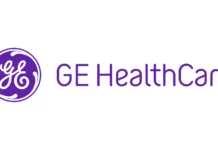The hospital is where patients are tested, diagnosed, and treated for lung cancer, but physical care is just one part of the overall picture. Patients’ cancer is often linked to occupational exposure to toxins like asbestos or silica. In these cases, many choose to pursue legal action. This means hospital teams are having to deal with an additional workload of legal requests and documentation queries.
If the right processes and procedures aren’t in place, things can quickly become disorganized. This results in stressed staff and frustrated patients. Let’s take a closer look at why hospitals need a proper plan for medical-legal coordination and explore the tactics some healthcare centers are already using.
Why Legal Requests Are Growing
Some forms of lung cancer, such as mesothelioma, are linked to long-term occupational exposure to harmful toxins. For instance, working with asbestos was common in the construction, roofing, mining, textiles, and shipbuilding industries. Those who served in the military may also be at risk, as well as first responders like firefighters and paramedics. Those involved in recovery and cleanup efforts are especially affected.
It can take decades for symptoms to appear, which is why we’re seeing more of these diagnoses recently. If your facility diagnosed one of these cases, you’re likely to receive document requests, release forms, and sometimes even direct outreach from legal firms. These teams are helping patients seek compensation and hold their workplace accountable.
Sometimes, the patient passes away before any claims have been made. Surviving family members may still contact a lung cancer law firm to pursue justice for their loved one. You should also be prepared to receive requests for older medical records.
The Importance of Establishing Protocols
If your hospital doesn’t have a process for handling legal requests, it can cause operational issues, potential legal problems, and even lead to reputation damage. Despite that, legal coordination still isn’t a standard part of most discharge protocols, but it’s becoming a common scenario, and even more so in regions with high rates of exposure like California, Florida, and New York. If your hospital doesn’t have a clear process, you risk that:
- Requests get passed from team to team without a resolution
- Families feel unsupported during an already stressful time
- Consent or privacy rules are misinterpreted
- Medical staff may be asked questions they’re not trained to answer
- Legal timelines get missed, with life-changing implications for patients and their families
None of this is good for the hospital, its staff, or patients, and can lead to frustration on all sides.
Creating Clear Legal Coordination Processes
While systems and processes may vary between medical facilities, here are some examples of what clear legal coordination might look like:
- A designated person or small team to handle all legal information requests
- Clear internal guidelines on what can be shared and with whom
- Transparent, publicly available information on the hospital website detailing the request procedure for patients, families, and legal representatives
- EMR tags for patients with occupational exposure, helping records teams know what to prepare
- Standardized, legally reviewed consent forms that are easy for patients to understand
- A designated channel for legal inquiries, so no fragmented email chains or cross-platform data loss
Some hospitals have taken things a step further and built formal relationships with external advocacy or legal groups. This allows referrals and record sharing to happen more smoothly.
Improving Patient Care and Experience
You’re used to thinking in terms of quality of care, but patients remember more than tests and treatments. They’re looking for a helpful, supportive, and optimized service that considers more than the immediate clinical aspects of their care.
When someone is already reeling from a lung cancer diagnosis and trying to understand their legal options, delays or roadblocks from their care provider can leave a lasting impression. On the other hand, if you can connect them with a team that can help them, it shows you understand what they’re going through and care enough to have a system in place.
Endnote
Substances like asbestos have been causing irreparable lung damage for decades. However, the delayed onset of symptoms and recent formation of compensation schemes mean many victims and their families are only seeking legal help now. Having a process in place at your hospital means less stress for your team, reduced compliance risks, and smoother day-to-day operations. Ultimately, coordination between the medical and legal communities is critical to get the best outcomes for those affected.


















